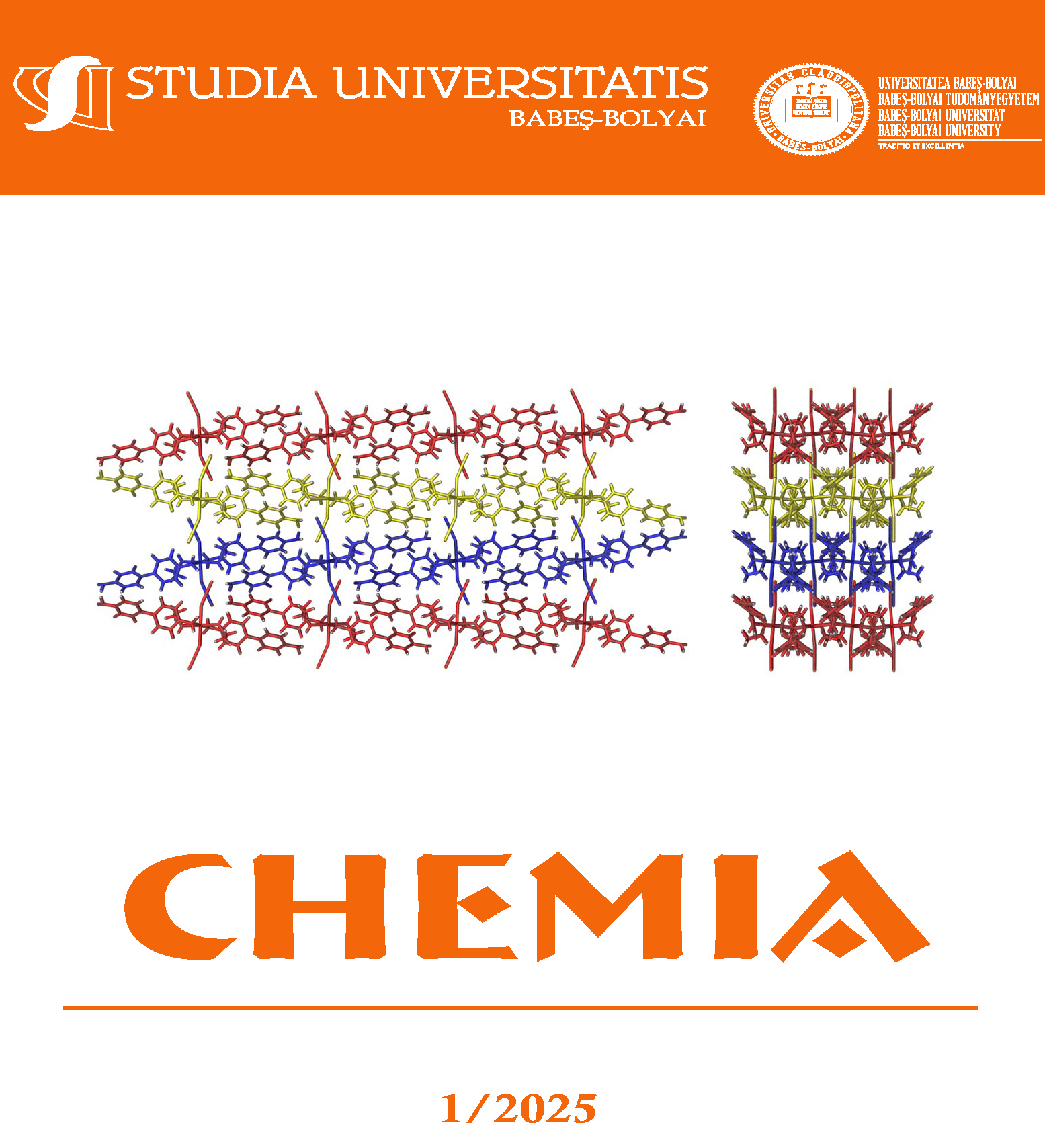RHEOLOGICAL CHARACTERIZATION OF ALGERIAN CRUDE OILS
DOI:
https://doi.org/10.24193/subbchem.2025.1.15Keywords:
Crude oil, rheology, temperature, thixotropy, viscosity, yield stressAbstract
This study examines the rheological behavior of three Algerian crude oils, focusing on steady flow, yield stress, and thixotropic behavior across temperatures. The oils exhibit non-Newtonian pseudoplastic behavior with a yield stress at the onset of flow. Results show that viscosity and shear stress decrease with temperature, reducing yield stress and improving flow. The Herschel-Bulkley model best fits crude oil 1, while the Casson model is more suitable for oils 2 and 3 at 30°C, and the power law and Herschel-Bulkley models apply at 20°C. Over the 20–50°C range, apparent viscosity and shear stress decrease by 71%, 77%, and 79% for oils 1, 2, and 3, respectively, while yield stress drops by 24.4%, 48.5%, and 54%. Thixotropic behavior is also observed, with reduced hysteresis area at higher temperatures, indicating reduced internal friction. These findings highlight the role of temperature in enhancing crude oil flow properties, suggesting heat treatment improves transportability.
References
1. B. Elarbe; I. Elganidi; N. Ridzuan; N. Abdullah; K. Yusoh; Mater. Today Proc., 2021, 42, 201-210.
2. F. Souas; A. Safri; A. Benmounah; Pet. Sci. Technol., 2020, 38, 849-857.
3. M. Meriem-Benziane; S.A. Abdul-Wahab; M. Benaicha; M. Belhadri; Fuel., 2012, 95, 97-107.
4. R. Kumar; S. Banerjee; A. Banik; T.K. Bandyopadhyay; T.K. Naiya; Pet. Sci. Technol., 2017, 35, 615-624.
5. M.T. Ghannam; S.W. Hasan; B. Abu-Jdayil; N. Esmail; J. Petrol. Sci. Eng., 2012, 81,122-128.
6. S. Sharma; V. Mahto; V.P. Sharma; A. Saxena; Pet. Sci. Technol., 2016, 34, 523-530.
7. E.E. Barskaya; E.S. Okhotnikova; Y.M. Ganeeva; T.N. Yusupova; Pet. Sci. Technol., 2022, 41,159-175.
8. S.O. Ilyin; L.A. Strelets; Energ Fuel., 2018, 32, 268-278.
9. D.E. Djemiat; A. Safri; A. Benmounah; B. Safi; J. Petrol. Sci. Eng., 2015, 133,184-191.
10. S.M. Al-Zahrani; T.F. Al-Fariss; Chem. Eng. Process. Intens., 1998, 37, 433-437.
11. M.A. Farah; R.C. Oliveira; J.N. Caldas; K. Rajagopal; J. Petrol. Sci. Eng., 2005, 48, 169-184.
12. M.T. Ghannam; N. Esmail; Pet. Sci. Technol., 2006, 24, 985-999.
13. M.R. Khan; Energy sources., 1996, 18, 385-391.
14. S.W. Hasan; M.T. Ghannam; N. Esmail; Fuel., 2010, 89,1095-1100.
15. K. Benyounes; SN Appl. Sci., 2019, 1,1-8.
16. R.I. Ibrahim; M.K. Oudah; A.F. Hassan; J. Petrol. Sci. Eng., 2017, 156,356-365.
17. R. Kumar; S. Mohapatra; A. Mandal; T.K. Naiya; J. Pet. Sci. Res., 2014, 3, 90-99.
18. H.A. Barnes; J. Non-newton. Fluid Mech., 1997, 70,1-33.
19. J. Mewis; J. Non-newton. Fluid Mech., 1979,6,1-20.
20. F. Souas; A. Safri; A. Benmounah; D.E. Djemiat; Pet. Sci. Technol., 2018, 36, 1093-1099.
21. F. Souas; A. Safri; A. Benmounah; D.E. Djemiat; Pet. Sci. Technol., 2018, 36, 1757-1763.
22. F. Souas; A. Safri; A. Benmounah; Pet. Sci. Technol., 2019, 37, 443-451.
23. F. Souas; Pet. Res., 2022, 7, 536-544.
24. Y. Al-Roomi; R. George; A. Elgibaly; A. Elkamel; J. Petrol. Sci. Eng., 2004, 42, 235-243.
Downloads
Published
How to Cite
Issue
Section
License
Copyright (c) 2025 Studia Universitatis Babeș-Bolyai Chemia

This work is licensed under a Creative Commons Attribution-NonCommercial-NoDerivatives 4.0 International License.



